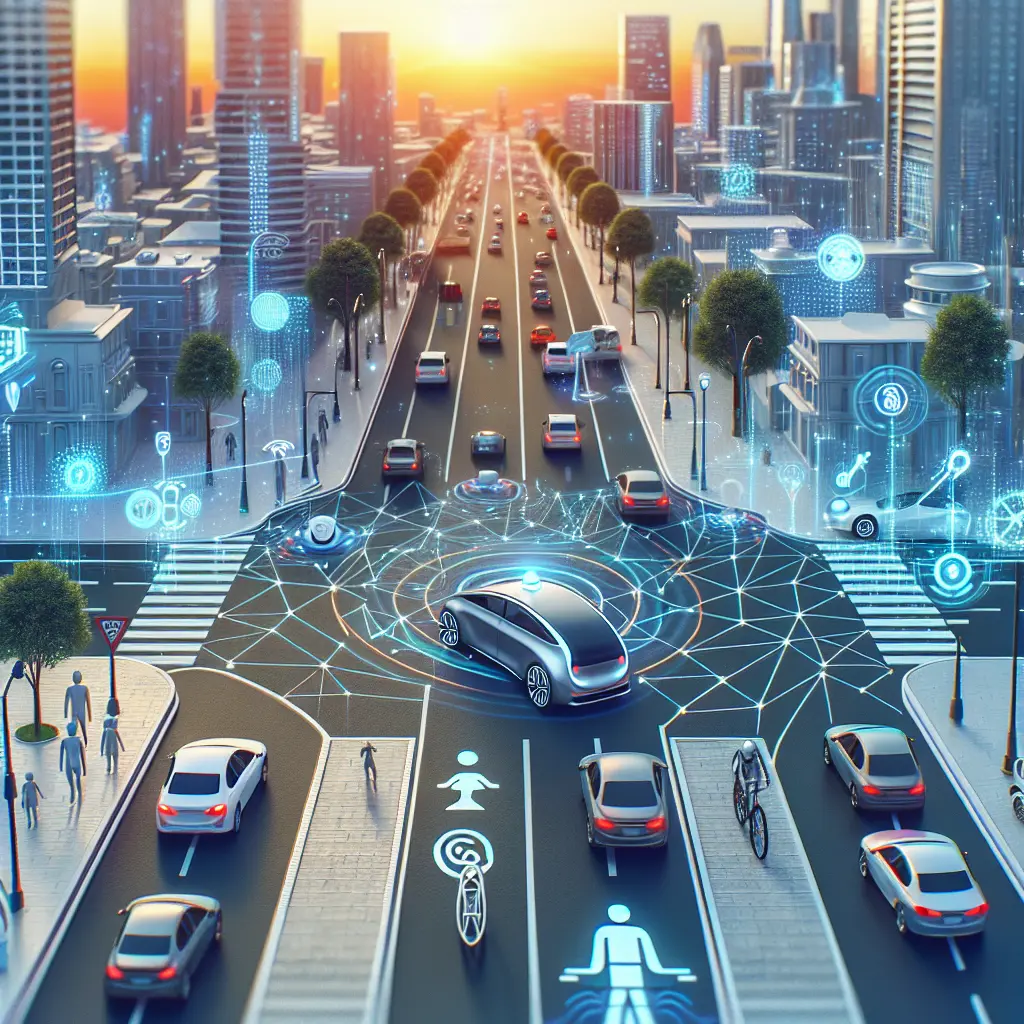
As we stand on the brink of a transportation revolution, the future of road safety looks promising with the rise of self-driving cars. Autonomous vehicles are not just a technological marvel; they represent a significant leap forward in road safety technology. By minimizing human error—the leading cause of accidents—self-driving car safety is poised to transform our streets into safer environments for all.
Redefining Road Safety Technology
At the core of self-driving car safety is the potential to significantly reduce human error, which accounts for approximately 94% of serious crashes (NHTSA). Autonomous vehicles are equipped with advanced sensors and smart transportation systems that detect and react to potential hazards faster and more accurately than human drivers. For instance, Toyota recently demonstrated AI-powered race cars using algorithms capable of handling vehicles after losing traction. Such technology could be integrated into everyday cars, enhancing driver assistance and accident avoidance (Car and Driver).
The Challenge of Continuous Updates
As cars become more akin to rolling computers, a significant challenge arises: how long can they continue to receive updates? Unlike smartphones that enjoy updates throughout their ownership, automakers face challenges in maintaining software support for these "smartphones on wheels" (The Verge). Ensuring regular updates is vital for maintaining the efficacy and safety of autonomous vehicle features, ultimately supporting road safety improvements.
Navigating Urban Landscapes with Driverless Cars
The impact of driverless cars extends beyond reducing accidents; they are poised to reshape entire urban landscapes. In cities like San Francisco, driverless taxis are already navigating streets, offering a glimpse into future transportation scenarios (San Francisco Chronicle). However, their integration hasn't been without challenges. Instances like Waymo cars glitching and honking incessantly highlight the importance of robust regulations and thoughtful policies to ensure smooth urban integration (The Guardian).
Self-Driving Car Regulations: A Critical Need
With the prevalence of self-driving cars increasing, the necessity for comprehensive regulations becomes paramount. For example, Waymo's introduction of robotaxis on California's freeways marks progress but also underscores the need for updated regulatory frameworks to manage these impacts (Los Angeles Times). Effective regulations will not only address current challenges but also pave the way for road safety innovations that redefine our understanding of future transportation.
International Concerns and Data Security
An often overlooked aspect of autonomous vehicles is data security, particularly with international players involved. Chinese firms have been extensively testing self-driving cars on American roads, raising concerns about data privacy and security (Fox News). The implications of foreign data collection emphasize the need for stringent regulations to protect sensitive information while fostering innovation.
Market Dynamics and Collaborations
The competitive landscape of autonomous vehicle development is experiencing significant shifts. Tesla's competitors are making strategic moves, such as collaborations with Uber to provide discounts on electric vehicles while jointly developing self-driving technology (Reuters). These partnerships highlight the dynamic nature of the market and suggest that road safety improvements will be driven by both technological advancements and strategic alliances.
Public Perception and Backlash
Despite the promising future of autonomous vehicles, public perception remains mixed. Some industry experts predict potential consumer backlash against self-driving vehicles, hinting at societal challenges ahead (Bloomberg). Addressing these concerns will be crucial for the widespread acceptance and success of autonomous driving benefits.
Road Safety Innovations: What Lies Ahead?
The journey towards safer roads through self-driving cars involves continuous innovation. As these technologies mature, we can anticipate breakthroughs in autonomous vehicle safety features that further enhance their ability to make split-second decisions to prevent accidents. Moreover, evolving regulatory frameworks will support innovations prioritizing both safety and efficiency in future transportation systems.
Conclusion: Paving the Way to a Safer Tomorrow
The integration of autonomous vehicles into our daily lives is a testament to human ingenuity and a vital step towards a safer transportation ecosystem. By understanding the dynamics of this transition—such as the need for ongoing updates, robust regulations, and public acceptance—we can fully embrace the potential of self-driving cars to revolutionize road safety. As we stand at this crossroads, it's essential to remain informed and engaged, ensuring that the future of road safety is both bright and secure.
Reflect on this future: How can you contribute to embracing the promise of autonomous vehicles? Stay informed and engaged as this technology unfolds. Share your thoughts and experiences—your voice matters in shaping this narrative.
Thank you for joining me on this exploration of the future of road safety. Your insights are invaluable as we embrace the transformative potential of autonomous vehicles.
Author: Maxwell Brighton